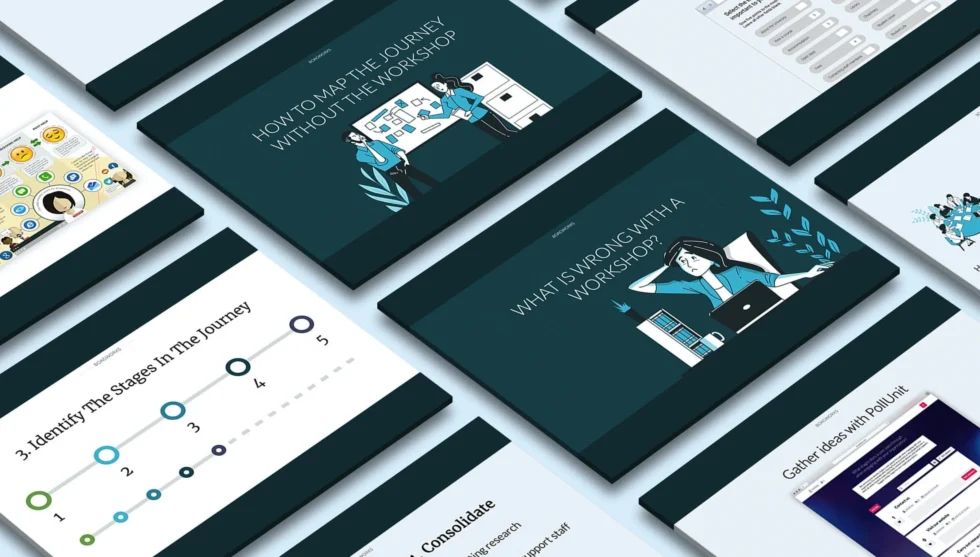When I engage with a client, one of the first questions I ask is about what research has been conducted with users. Too often, the answer is very little. But when that is not the case, the next thing to appear is a set of user personas.
Defining Personas. What are personas?
Just in case you haven’t come across personas before, they are a summary of a fictional person who represents an audience that an organization is trying to reach.
Typically they include demographics, preferences, attitudes, skills, and other background information that provides a sense of the nature of the audience.
Most people who create personas use a user personas template to ensure consistency between the different audiences they seek to represent.
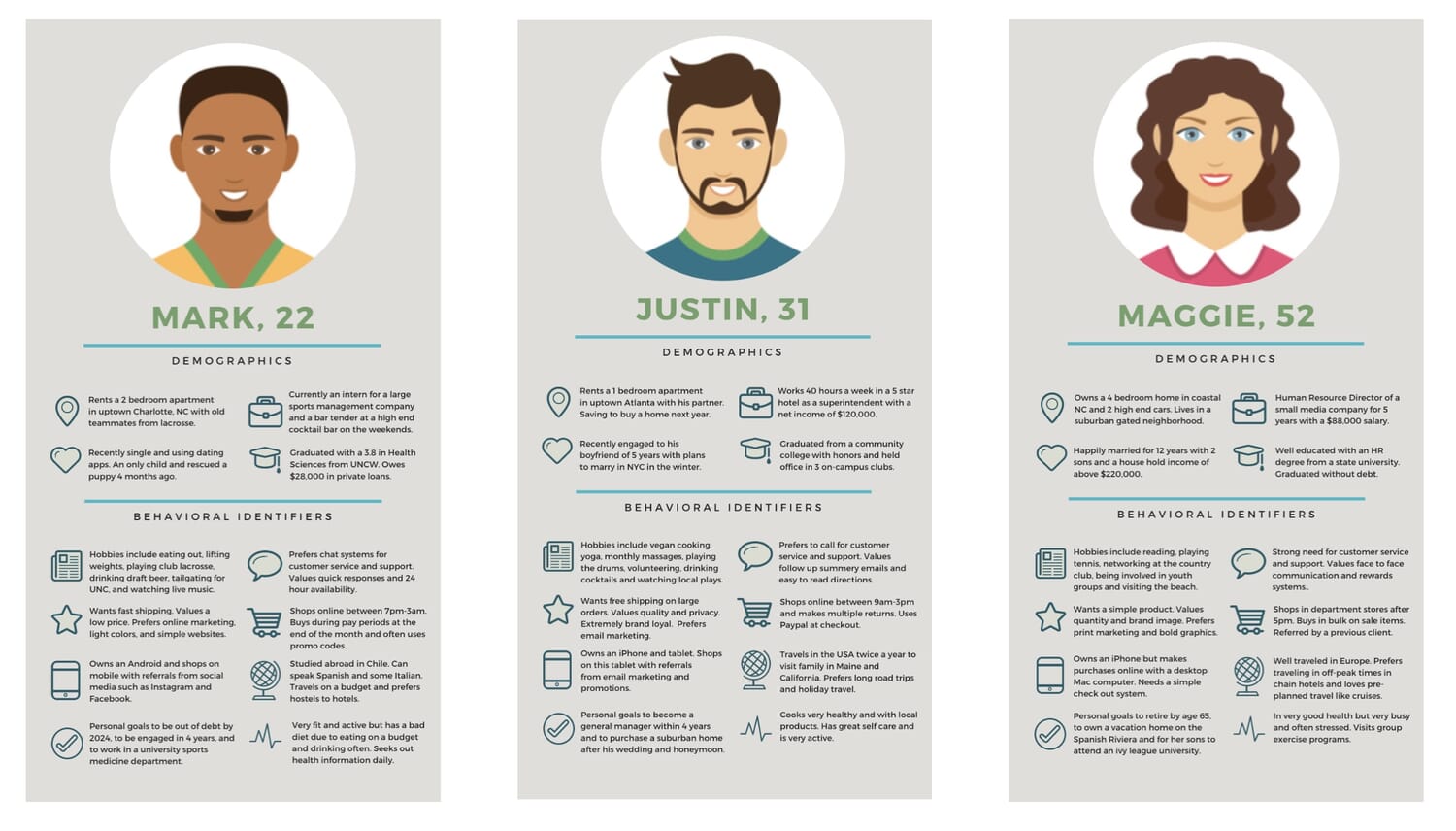
Creating personas seems to be the de facto way of representing user research. In many ways, this makes a lot of sense because, without a doubt, personas do come with many benefits.
The Benefits of Personas
- Personas are a great way of ensuring a company-wide consensus on the target audience.
- Personas help stakeholders stop focusing on their perspective and start considering the customer’s point of view.
- Personas introduce the customer’s needs into the decision-making process.
- Personas promote a deeper understanding of the customer.
- Personas encourage empathy with the customer.
- Personas prevent the customer from being forgotten in the weeds of a project.
Traditional personas are particularly beneficial to marketers, copywriters, and designers seeking to engage with a customer on an emotional level. But for those of us who work in the field of user experience, they do have some shortcomings.
The Problem With Personas
Personas come in all shapes and sizes, so there is a danger here that I generalize. However, often the personas that I am presented with when I ask what user research the business has done has a distinct marketing focus. That is hardly unsurprising as most customer research is carried out by marketing teams. However, that analysis is not always particularly helpful from a user experience design perspective.
The problem is that typical ‘marketing’ personas focus on the customer’s demographics, tastes, and lifestyle. They seek to understand what influences the customer’s buying habits.

The above persona was produced by Jason Travis.
Without a doubt, this kind of information is valuable to a user experience designer. But it is not the whole story. We have other important questions we need to answer about the user. Information that is often lacking from the personas that clients give us at the beginning of projects.
The Information We Need as UX Professionals
As user experience designers, we need personas that answer questions like:
- What questions does the user have?
- What tasks are users trying to complete?
- How do users feel about the process?
- What has led the user to this interaction?
- What is the user’s ultimate goal?
- What other touchpoints will the user encounter in their journey?
In other words, it is not enough to understand the user’s attitudes; we need to dig deeper into understanding their behavior too.
Avoid making stakeholders feel you are repeating work.
Frustratingly, in the minds of many stakeholders, they have done their user research and so are reluctant to undertake more. That is especially true if it results in the production of yet more personas at the end. Personas that, from their perspective, they have already produced. That is why it is often a good idea to look at visualizing user research we carry out in a form other than personas.
The Alternatives Available to You
Without a doubt, it is worthwhile visualizing the user research you undertake. But that doesn’t mean the visualization needs to be in the form of personas. You can get the benefits in other ways. In fact, some of the other tools available can provide advantages over personas.
Let’s look at three other options that may be more appropriate from a user experience design perspective.
Empathy Maps
One option available to us is empathy maps. My approach to empathy mapping has been heavily customized to focus on the types of user research particularly relevant to us as user experience professionals.
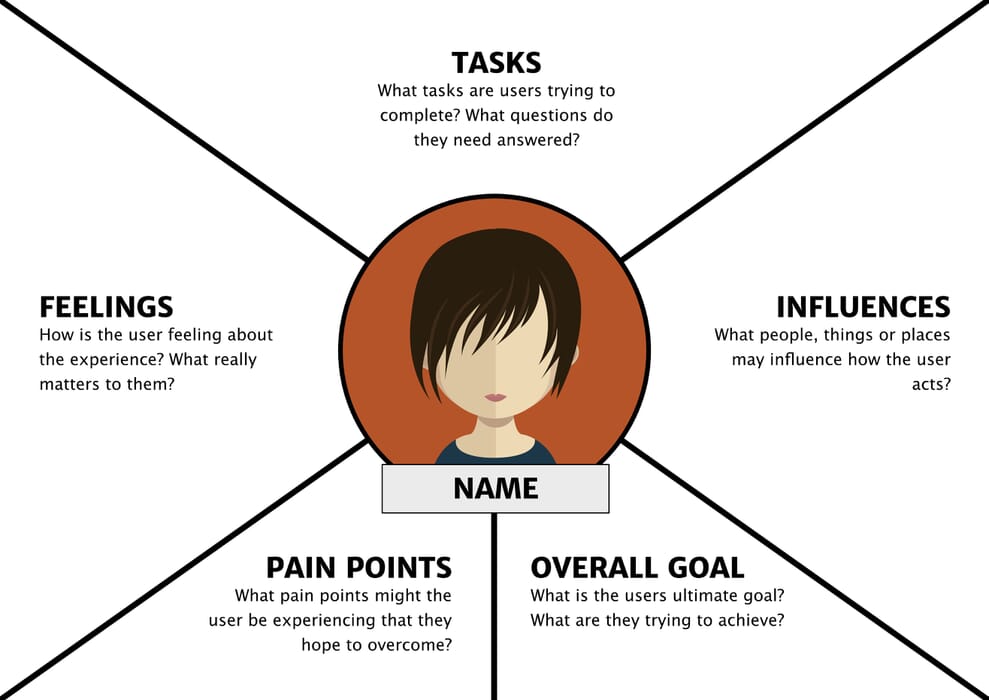
The key factors I focus on in an empathy map are:
- What does the user want to do?
- What does the user want to know?
- How does the user feel?
- Who or what is influencing the user’s choices?
- What is the user’s ultimate goal?
- What pain point is the user seeking to solve?
Beyond that, empathy maps are much like personas. We build them around a fictional (or real) user who we frequently represent with a photo and name for easy reference.
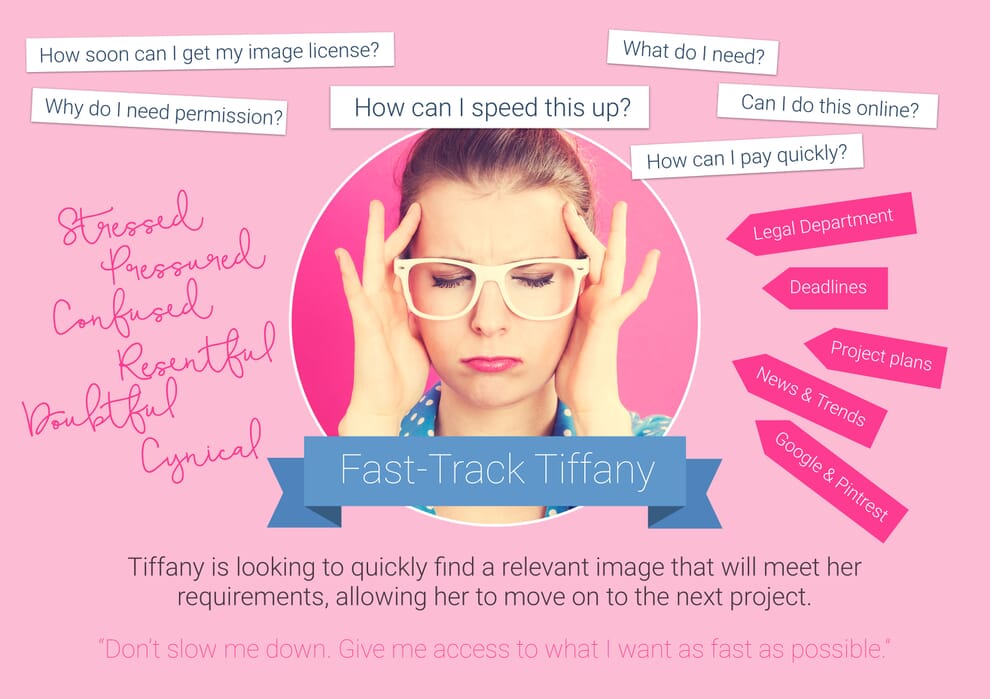
The downside of empathy maps is that they tend to lack detail. They look at the user in only the most general terms. For more depth, it might be worth considering user story cards.
User Story Cards
A user story card is light-on-details about the user, focusing instead more specifically on what the user wants to achieve.
Typically a user story card consists of a statement made up of three parts.
- Who the person is.
- What task they are trying to complete?
- What their ultimate goal is.
For example.
I am a user experience designer, I want to learn about personas, so I can decide if they are right for my client.
It is typical to have many user story cards for any individual type of persona. That allows those involved in the project to build up a detailed picture of what the user is trying to achieve.
In fact, it is not unusual for teams to use story cards to replace a functional specification, forcing a focus on users rather than functionality.
Although user stories are a valuable tool because of their granularity, they lack the instant recognition of a persona. You can look at a persona and very quickly get a sense of a user.
However, there is a middle ground that customer journey maps do, at least partly, fill.
Customer Journey Maps
One of the significant drawbacks of personas and even empathy maps is that they are a snapshot in time. They do not give a sense of the journey the user goes on when engaging with a company. For example, the questions a user has will change over their engagement with a business. But the same is true for tasks, feelings, or any other characteristic you might choose to track.
That is why customer journey maps are so valuable. They show the journey the user is on and reflect their changing mindset.
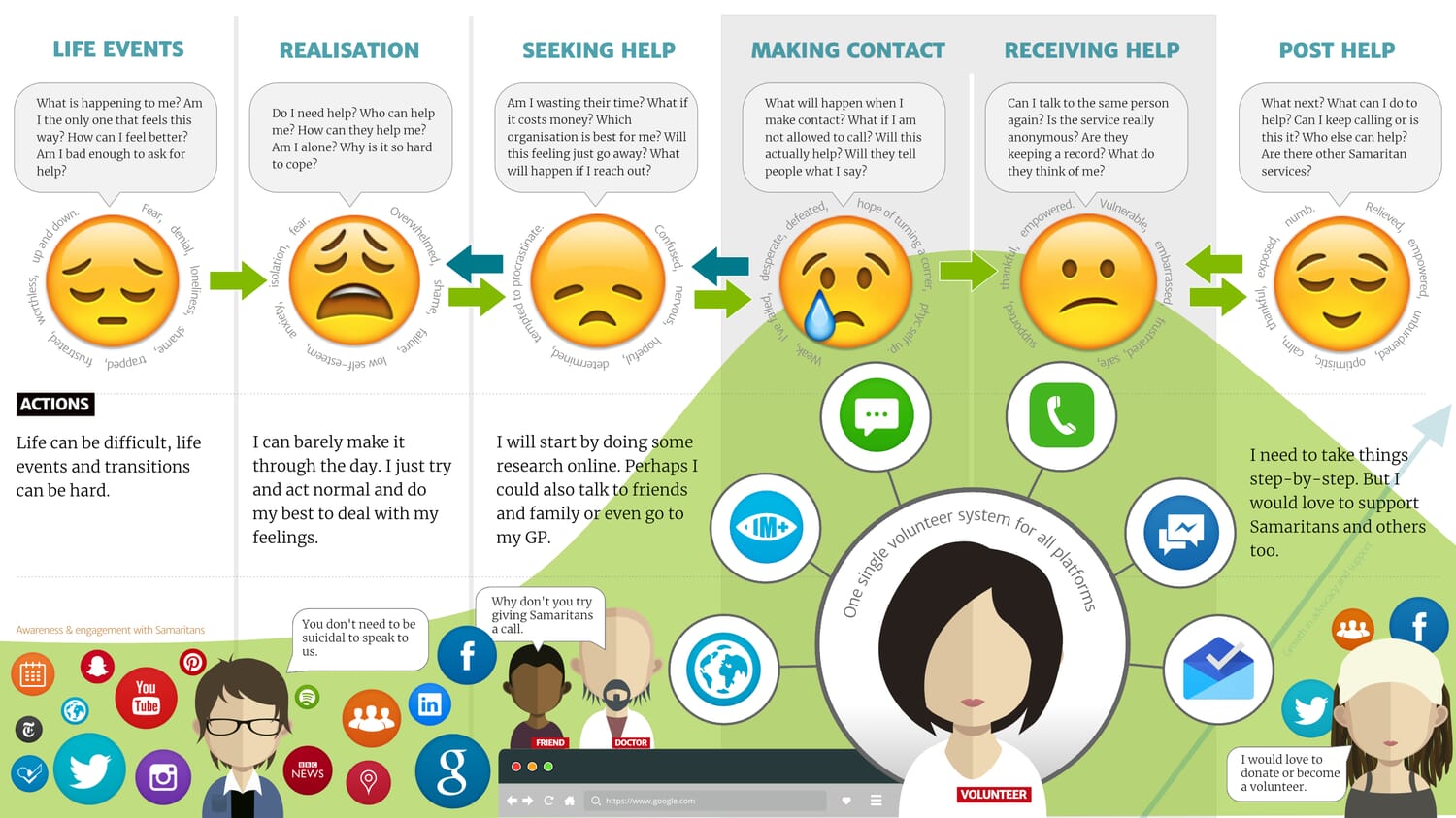
There is no definitive approach to customer journey mapping. However, typically it is broken down into a series of steps. Each step represents a part of the journey. So, for example, a typical ecommerce journey might include:
- Discovering a need for a product or service.
- Researching the available choices.
- Narrowing the options to a final selection.
- Placing an order.
- Delivery of the product or service.
- After-sales.
Obviously, the more steps, the more complexity. That means it is often wise to keep each part of the process broad so you can limit the number. If you don’t, your customer journey map will become unreadable.
For each step in the journey, you can display whatever information you feel is appropriate. I tend to go with the following in most cases:
- Questions the user has.
- Tasks the user wants to complete.
- Touchpoints they interact with (e.g., social media or in-store).
- How they are feeling at that point in the journey.
Again, don’t include too much otherwise, the final journey map will become overwhelming.
It is important to remember that a customer journey map can only be a story of a fictional user’s journey. No two user journeys are identical, and they are rarely linear. That means we cannot take journey mapping too literally. However, it is a valuable tool for understanding where your project fits into the overall journey and what it will need to deliver for the user.
Whether you use journey mapping, empathy maps, story cards, or personas, one constant remains – you must do your own research, and you must visualize it.
Whatever You Do, Gather and Visualise Research
Relying on marketing research is not going to get the job done, and even if it did, nothing beats spending time with users yourself. Second-hand insights into users are always second best.
User research doesn’t need to be complicated. It is not rocket science, and there are exceptional tools like Aurelius (who are sponsoring this post) to help. Ultimately it is just chatting to users about your goals and recording some notes. Anybody can do that!
But be careful. Don’t carry out a load of research and then leave it in a drawer somewhere. This kind of analysis is only useful if it is in your face, constantly reminding you to think about the user. That is why it is so important to visualize what you know in some way. Something thing to inspire you and your colleagues never to forget who will be using your digital service.
Aurelius helps you tag, group, synthesize and search every user research note and customer key insight in one place so you can make awesome products and features.
